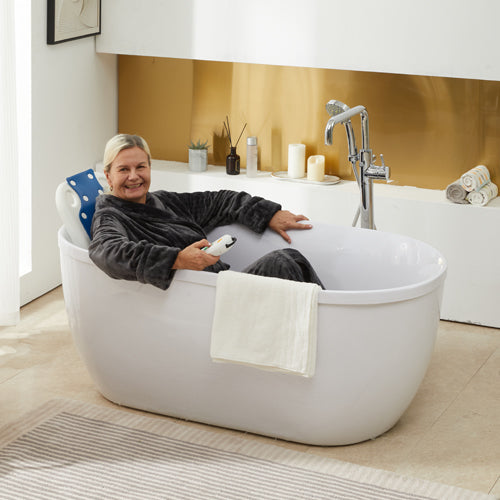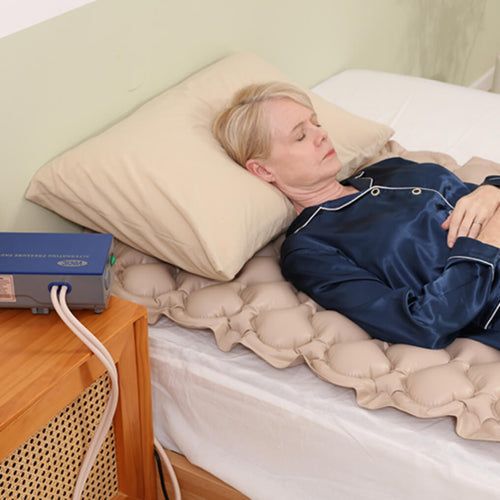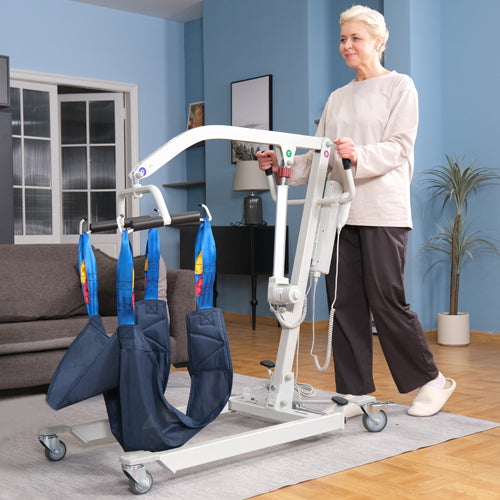Battery life can be a really key factor when choosing a electric wheelchair. Generally speaking, the battery life of a electric wheelchair is about 1 to 3 years, and this time will vary depending on how often you use it and how well it is maintained. Many people want to know how long their batteries will last and how often they should be recharged so that they can better organise their daily activities and travel.
Next, we'll talk about those factors that affect the battery life of your electric wheelchair and how to make it last longer to help you better enjoy the convenience of your electric wheelchair.
What Electric Wheelchair Battery Types?
There are three main types of batteries for power wheelchairs, each with their own advantages and they have different lifespans:
-
Lead-Acid Batteries: Lead-acid batteries are a more traditional choice for electric wheelchairs, and they are very affordable, but they are heavier. You need to keep an eye on their maintenance, such as keeping them well-watered. And, if properly cared for, lead-acid batteries have a lifespan of about 1 to 2 years.
-
Gel Batteries: Gel batteries use a gel-like electrolyte and are completely sealed, so you don't have to worry about leaks. Plus, they don't require maintenance, making them a great choice for a variety of environments. And gel batteries can serve you for about 2 to 3 years.
-
Lithium-Ion Batteries: These batteries are the most advanced power wheelchair batteries you can buy. They are also very lightweight, charge very quickly, and last longer per charge. While more expensive, their efficiency and longer life span (typically 3 to 5 years or more) make them well worth the investment. For example, VOCIC's V62 Folding Portable Power Wheelchair is equipped with a lithium-ion battery that extends the range by 12.5 miles.

What Factors Affect the Battery Life of Electric Wheelchairs?
The following factors will significantly affect the battery life of a motorized wheelchair:
Battery Type
The type of battery you use (e.g., lead-acid, gel, or lithium-ion) will affect the battery life of your wheelchair. If you choose a lithium-ion battery, it will last longer and have a better range. It will enable you to carry out longer outings, such as going to the park or shopping.
How to Charge
If you often leave your batteries plugged in overnight, this may result in accidental overcharging, which can accelerate battery depletion. You need to follow the manufacturer's charging instructions to keep your battery in good condition.
Frequency of Use
The more you use your wheelchair, the more power your batteries will drain. If you frequently travel over rough surfaces such as gravel roads or uneven pavements, or if you have to climb steep hills, you may find that the battery drains more quickly in these situations.
Weight Load
The amount of weight your wheelchair carries can also affect how quickly the battery drains. If your power wheelchair carries a heavy backpack or groceries, the extra weight will require more power to move around, which will drain the battery faster.
Environmental Conditions
When you leave your wheelchair out in the hot sun or exposed to the cold, the performance of its batteries will suffer. To protect the battery, it is recommended that you store your wheelchair in a garage or a cool place when you are not using it, especially in extreme weather.
What Are the Signs That the Battery Needs to Be Replaced?
Do you not know when to replace the battery of your motorized wheelchair? You can understand the following signs of battery failure, if any, the battery may need to be replaced:
-
Reduced Range: If your wheelchair doesn’t travel as far as it used to after a full charge, it’s possible that the battery capacity has decreased. It’s recommended that you check it first and then replace it as needed.
-
Slower Performance: If you feel as if your wheelchair is getting slower or having difficulty climbing slopes that you had no problems with before, it may be a sign that the battery is losing its ability to provide the necessary power. If this is a sign, you may want to consider replacing the battery.
-
Extended Charging Time: When the batteries in your wheelchair or Lightweight wheelchairs, etc. are taking much longer than usual to charge. It is also possible that the batteries are no longer holding their charge effectively. You will therefore need to replace the battery in good time while travelling.
-
Frequent Need to Charge: Even under normal use, you need to charge the battery more frequently than usual. This indicates that the battery capacity has decreased. If it has seriously affected your travel, you may want to consider replacing it.
-
Battery Age: Batteries have a certain natural life span. If your battery is about to or has exceeded its expected life (usually 1-3 years, depending on the type), it may need to be replaced.
-
Physical Signs of Damage: When you find that your wheelchair’s battery is swollen, leaking, or emitting any odor, it is an emergency sign and you need to replace the battery immediately to avoid damaging the wheelchair or causing safety risks.

How to Extend the Battery Life of an Electric Wheelchair?
To extend the battery life of your electric wheelchair, you can follow these practical tips in your daily life:
Getting the Power Wheelchair Charged for the First Time: When your electric wheelchair or other wheelchair that requires batteries arrives, it is recommended that you arrange for the wheelchair to be charged for a longer period of time until the battery is fully charged. For example, use your home battery to charge it, which will ensure that the battery performs at its best.
It Is Best to Use the Best Charging Method: It is recommended to disconnect the charger as soon as the battery is fully charged to avoid overcharging. Also, try not to let the battery drop below 20% to prevent damage from deep discharge.
Put It in the Shade: If you don't use your wheelchair often, you can store the battery in a cool and dry place. Note that you need to keep the charge between 40-50% to keep it healthy during idle time.
Avoiding Some Terrain and Keeping Tyres Inflated: Plan your trip to avoid rough terrain and steep climbs, as these terrains will drain the battery faster. In addition, keeping the wheelchair tires inflated to the right pressure can reduce the pressure on the battery.
Regular cleaning and professional inspection: Wipe down the battery terminals regularly and check that the connections are tight and clean. This will enable you to use the power efficiently. It is also advisable to have your wheelchair and its battery checked regularly by a technician. They will be able to detect problems at an early stage and ensure that the wheelchair runs smoothly.









